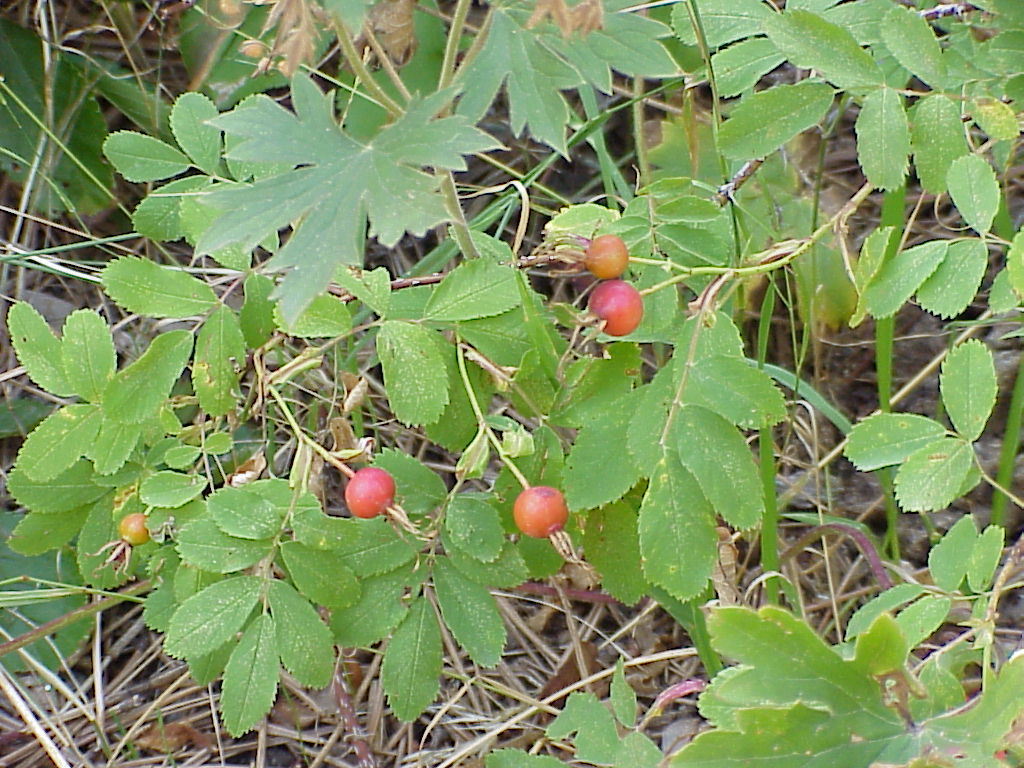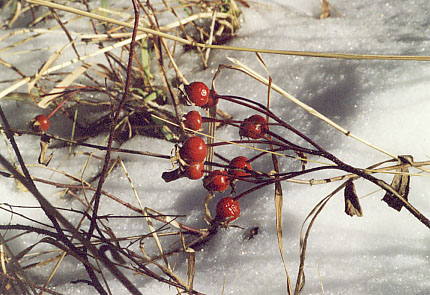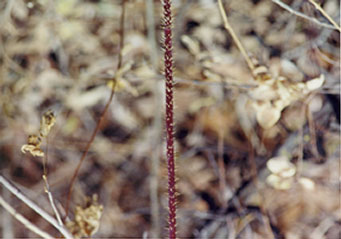English
rose
Scientific Name
Rosa woodsii; probably other Rosa spp
Arapaho
1. (berries) yéino’ ; 2. (plant) yéiníís ; 3. (flower) be’e’eiTranslation of the Arapaho
3. ‘red head’
Roses and the Arapaho
Flowers: Drug: tonic. Arapahos today are told to eat the petals “because they are good for you.”
Plant: Drug: gastrointestinal aid. The bark is used to make a tea which was used as a stomach medicine. Arapahos say the bark was scraped off, dried, and then boiled. It is used to “flush out the intestines.” Murphey records the same use of the bark for a tea.
Drug: gynecological aid. Was reported to be used for “female complaints” and as an aid in childbirth by Bobby Joe Goggles.
Dye: Murphey reports the roots were used to make an orange dye.
Other: Hunting and fishing implements.The stalks of the plant were collected in winter, stripped of thorns, and used to make arrows.
The rose bush was considered to have been the first plant on earth (Kroeber 1983). He records its use as a motif carved onto one of the four sacred sticks associated with the sacred pipe (361). It was used to construct the Sacred Wheel which was a key religious symbol and element of the Sun Dance (Dorsey 1903).
Rose Hips: Drug: orthopedic aid. Murphey notes that the seeds used to “produce a drawing effect for muscular pains.”
Food: fruit, winter food. The same word is used in Arapaho for ‘tomato.’ Rose hips were eaten.Mooney (978) reports on their use as a winter food, by many tribes, presumably including the Arapaho since they are the subject of the passage in question. He also notes that rose berries frequently appear as a motif in ghost dance songs (978). Arapaho elders today, however, caution that one should not eat too many of these berries, or else one will get “itchy butt.”



A rose stalk in winter - when it would have been collected for making arrows.